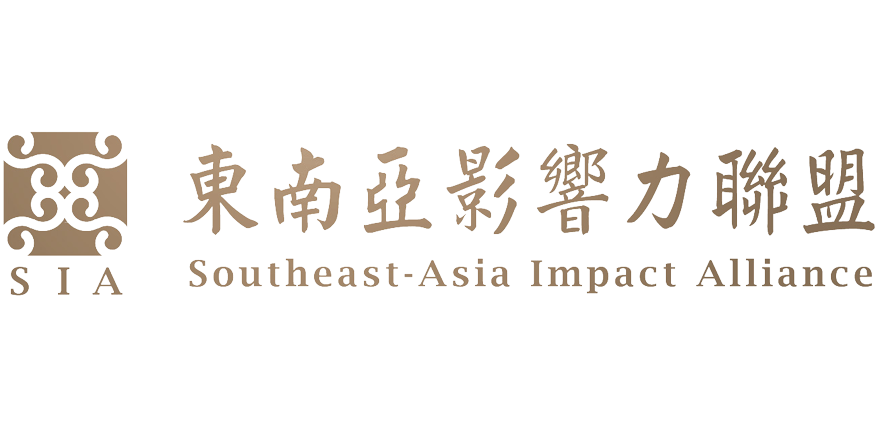Vietnam and the semiconductor supply chain diversification trend
The global semiconductor industry is intensifying efforts to diversify the supply chain, and Vietnam, an attractive destination for investors, is poised to become a significant semiconductor manufacturing hub in the region.

The global trend of diversification in the semiconductor supply chain
Semiconductors are a crucial component in providing power for our modern world. Nearly every electronic device we use to operate businesses and organize our lives contains semiconductors. Therefore, it’s not an exaggeration to say that these tiny chips are among the most valuable resources in the world.
Statistical data shows that, despite production slowdowns in 2022, the semiconductor industry still achieved global revenues of $580.13 billion with a 4.4% growth. Analysts predict that in 2023, the total global semiconductor revenue will decrease to $515.10 billion but will rebound strongly to around $576 billion in 2024.
However, despite the immense scale and global geopolitical significance of the semiconductor industry, this market is highly susceptible to disruptions in the supply chain—a phenomenon that occurred regularly in the early years of the 2020s.
The Covid-19 pandemic, the US-China trade war, and conflicts in Ukraine have all contributed to significant disruptions in the semiconductor supply chain. While consumer demand has surged, the chip industry has faced difficulties in manufacturing and transporting its products. The semiconductor shortage has spread worldwide, and its impacts can still be felt to this day.
Vietnam recognizes that its budding chip industry may not be able to develop advanced chips on a commercial scale like Taiwan (China) or South Korea. Therefore, businesses will focus on niches that support specific product lines, such as power management chips, analog chips for the Internet, the Internet of Things, and application-specific chip systems.
To address the risk of supply chain disruptions, nations and semiconductor corporations are implementing various coping measures. One of the most critical solutions is the diversification of semiconductor manufacturing activities to minimize or eliminate issues in the supply chain.
The United States, South Korea, Europe, and China are swiftly developing their semiconductor fabrication facilities to ensure a reliable supply and reduce dependence on foreign sources. Tensions between the United States and the West with China have also led semiconductor companies to increasingly pursue the “China plus one” strategy, aiming to shift some manufacturing operations to countries outside China to mitigate dependence and economic risks in the world’s second-largest economy. India, as well as Southeast Asian countries, including Vietnam, are seen as potential destinations targeted by semiconductor companies.
The wave of increased investment in Vietnam
According to The Diplomat, President Joe Biden’s visit to Hanoi on September 10, 2023, has opened up deeper relations in all areas between Vietnam and the United States. One of the most notable highlights, with specific commendable successes, is the semiconductor industry.
Top executives in the U.S. semiconductor industry witnessed President Joe Biden announcing Nvidia and Microsoft’s AI projects, the new semiconductor design centers in Ho Chi Minh City by Synopsys and Marvell, the inauguration of Amkor’s $1.6 billion chip packaging facility near Hanoi in October, and a U.S.-Vietnam semiconductor partnership to support flexible semiconductor supply chains.
The Diplomat assesses that, at the present time, Vietnam’s policy planners are still cleverly leveraging political independence and FDI (Foreign Direct Investment) resources to build a foundation for a technology powerhouse.
Investment activities in this area are part of the global semiconductor supply chain diversification trend that leading U.S. semiconductor companies are implementing, and it is expected to create conditions for Vietnam to rise in the semiconductor industry, focusing on producing higher-value chips.
Previously, many foreign semiconductor companies had also undertaken significant investment activities in Vietnam. The U.S. company Intel is currently preparing to expand its large assembly, test, and packaging (ATP) location. Amkor will also expand its existing ATP facility, while Synopsys is relocating EDA design operations from China to Vietnam.
From South Korea, Samsung invested nearly $1 billion in a semiconductor component facility in 2022 and planned to expand its facility in Thái Nguyên province to produce complete chips in 2023. Additionally, dozens of suppliers in the Netherlands for ASML see Vietnam as a suitable location to carry out manufacturing operations.
The Diplomat notes that several factors have driven the influx of investment into the semiconductor industry in Vietnam. Production disruptions caused by the pandemic in China and the increasingly tense U.S.-China relationship have prompted companies to pursue supply chain diversification strategies, moving manufacturing operations to other countries, including Vietnam.
“Vietnam is becoming a pivotal player in the global supply chain reshoring process… Vietnam’s favorable geographical location and developing industrial zones have significant appeal for manufacturers. This transition highlights Vietnam’s increasingly prominent role in the global semiconductor supply chain restructuring scenario and marks a new phase of the country’s economy,” said Maheshwari Bandari, an economist at GlobalData.
Furthermore, foreign governments are also encouraging this change as a way to reduce their country’s dependence on China’s manufacturing industry. The proposal by the U.S. Treasury Secretary Janet Yellen regarding Vietnam’s potential benefits from the $500 million international supply chain security fund under the Science and CHIPS Act is evidence of this.
A sound investment attraction strategy
According to The Diplomat, to attract foreign investment in the semiconductor sector, the Vietnamese government has implemented an attractive and relatively comprehensive incentive program.
First, Vietnam offers a preferential 10% corporate income tax rate for 15 years, applying to investments in both research and development of infrastructure for high-tech sectors, with semiconductor being a priority industry.
Second, Vietnam allows companies and research organizations to have a tax exemption for property (land leasing fees) throughout the entire lease term if the facility is used for research and startup incubation activities.
Vietnam’s largest city, Ho Chi Minh City, has a supplementary program that partially or fully subsidizes interest for specific investment projects. The government provides a 50% interest subsidy for R&D facilities in “supporting industries,” 70% for basic manufacturing activities, and 85% for purchasing advanced technology and equipment, with a total amount of up to $8.8 million for each project. This program serves to support the city’s Integrated Circuit Development Program.
In addition, to encourage companies to hire Vietnamese engineers, the standard value-added tax (VAT) rate of 10% for services is reduced to 5% for high-tech sector activities, such as semiconductors. Eligible activities range from research to technology transfer consulting and technical training.
However, alongside these incentives, policymakers are also working to ensure that foreign companies support Vietnam in enhancing its domestic technical capabilities, ultimately gaining greater profits from the final products produced in Vietnam.
To achieve this goal, the Ministry of Industry and Trade encourages foreign companies, especially those receiving government subsidies, to establish joint research programs with local organizations. A prime example is the chip design training agreement between Synopsys, Ho Chi Minh City High-Tech Park, Samsung, and the Ministry of Industry and Trade’s domestic supplier development program.
State-backed venture funds like the National Technology Innovation Fund and the Vietnam-Korea Information Technology Incubator are continuing to serve Vietnam’s efforts to contribute higher value to the global chip supply chain.
Furthermore, Vietnam accurately recognizes that its nascent semiconductor industry may not be capable of developing advanced chips on a commercial scale like Taiwan (China) or South Korea. Therefore, businesses are focusing on niche segments that support specific product lines such as power management chips, analog chips for the Internet of Things, the Internet of Things, and application-specific chip systems.
This strategy is seen as having similarities with some other countries like France, allowing Vietnam to search for appropriate market segments to compete globally with modest resources and industry support policies.
Maintaining harmonious relationships in the semiconductor supply chain
The Global Times, a Chinese newspaper, notes that Vietnam’s semiconductor industry, supported by foreign direct investment (FDI) from Western industrial giants, has experienced significant growth in recent years, becoming the third-largest chip exporter to the United States in Asia.
However, despite stable development in recent years, Vietnam’s semiconductor industry still heavily relies on FDI and its role in the supply chain is primarily limited to assembly and testing. Therefore, Vietnam needs to integrate more deeply into the regional supply chain to receive additional support for its semiconductor sector.
According to the Global Times, it’s natural for Vietnam to strengthen its relationship with the United States and encourage further investment from Western high-tech companies. However, at the same time, the industrial connection between China and Vietnam will not weaken but rather be enhanced. China remains the world’s largest chip market, and no company is willing to completely detach from this market. Sustainable development of Vietnam’s semiconductor industry, in a harmonious relationship with both the West and China, will be a valuable asset for the Asian industrial landscape.
This perspective is also supported by Jayant Menon, a senior fellow at the ISEAS-Yusof Ishak Institute in Singapore. According to Menon, “While U.S.-China tensions accelerate supply chain diversification, connections with China will remain intact.” He also added that “in the near future,” U.S. investments in Vietnam’s semiconductor sector are unlikely to significantly impact the supply chain or the relationship between Vietnam and China.
Overall, Vietnam still has a long way to go before becoming an advanced chip-producing economy. However, as of now, The Diplomat suggests that Vietnam’s policymakers are making smart use of their geopolitical independence and FDI to build a foundation for a technological powerhouse.
Refer to the original post here
For additional details, refer to our SIA services | Link



